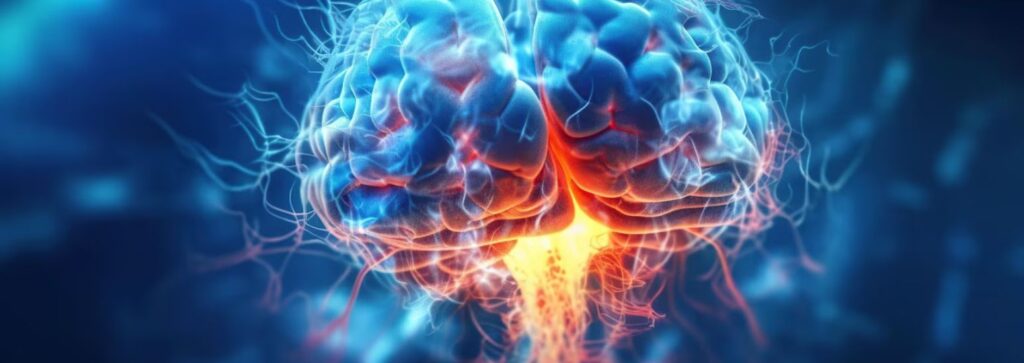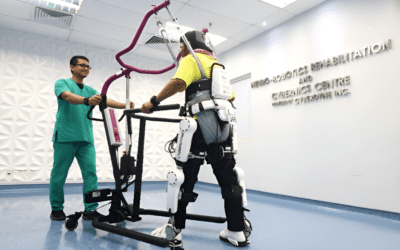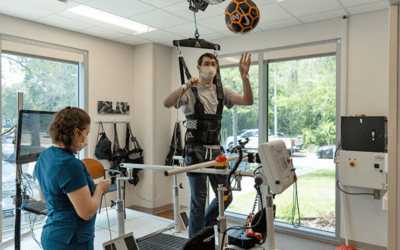Our brain is capable of incredible feats of recovery that we have begun to understand. Neuroplasticity, also known as brain plasticity, is the brain’s ability to modify and adapt in response to experience.
Cognitive rehabilitation is a set of interventions that aims to improve a person’s ability to perform intellectual tasks by retraining previously learnt skills and teaching compensatory strategies.
Neuroplasticity is used by attention-enhancement techniques in cognitive rehabilitation to aid cognitive recovery, particularly in the area of attention. A strategy called attention process training uses methodical exercises to improve the regulation of attentional functions.
Cognitive rehabilitation has undergone considerable theoretical and practical development as a specialised research and clinical application field.
The Connection…

Many medical problems, such as traumatic brain injuries, stroke, dementia, and even cancer, can affect the brain and make it difficult for someone to think or process information.
Cognitive rehabilitation techniques use neuroplasticity to restore cognitive function after brain damage. Through exercises and activities that are organised and that promote brain reorganisation, these therapies focus on attention, memory, and executive functions.
Neuroplasticity can be manipulated in both the healthy and diseased brain. Utilising the brain’s ability to create and lay down new pathways, the physiotherapist can play a big role in rehabilitation and improve quality of life.
Importance of Neuroplasticity in Cognitive Rehabilitation
Cognitive rehabilitation therapy refers to a group of treatments that help improve a person’s ability to think after a brain injury or illness that affects the brain.
Cognitive skills are the core skills your brain uses to think, read, learn, remember, reason, and pay attention.
Cognitive rehabilitation therapy (CRT) aims to enhance the person’s capacity to process and interpret information. This can improve the person’s ability to function in all aspects of daily life, such as maintaining relationships with family and friends, working, and participating in their community.
Through neuroplasticity, the brain is consistently rewiring itself and modifying its connections. It can reorganise itself both in structure and how it functions.
Without neuroplasticity, it wouldn’t be possible to do many of the things that make us human. This includes learning, developing, and forming memories. With development, neural systems stabilise, and optimal patterns of functioning are achieved.
There are two approaches to Cognitive Rehabilitation- Restorative and Compensatory approaches: The therapeutic approach aims at reinforcing, strengthening, or restoring the impaired skills.

- Restorative treatment: Patients can practise skills to improve them. Examples include memory exercises, problem-solving games, and mental exercises aimed at improving attention span.
- Compensatory treatment: Patients can learn how to work around their deficits or injuries. This includes using smartphones, calendars, memory tools, and devices, and setting alarms to help compensate for reduced cognitive function.
The four levels of Cognitive Rehabilitation are-
- Education
- Process Training
- Strategy Development, and
- Functional application
What happens during a Cognitive Rehab?
Cognitive rehab therapy includes a variety of methods and approaches. They all aim to restore cognitive function. Cognitive function includes skills like attention, memory, processing speed, problem-solving, and multitasking.
During cognitive rehab, therapists and psychiatrists use different methods, techniques, and tools to help improve your cognitive abilities. These might be done during individual or group sessions guided by a therapist, online programmes, or a combination of these.
There’s no one-size-fits-all approach to cognitive rehab. The type of exercises and tasks you’ll perform will be tailored to the patient’s needs.
Cognitive rehab is based on the concept of Neuroplasticity — that the brain can change and adjust throughout life by strengthening existing connections or creating new ones.
So, connect with us at www.rehabmodalities.com to learn more about our rehabilitation therapy.
To know more write to us: info@rehabmodalities.com



